The soil food web is mostly made up of micro-organisms that are invisible to the naked eye. I’ve written lots about what it does, and why it’s needed, but today I thought I’d share some pictures and introduce you to the amazing microscopic world beneath your feet.
Bacteria
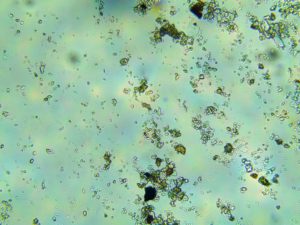
See all of the tiny dots in the picture? Those are the bacteria. There are many different kinds of bacteria. If you really search, you can find little rods as well, about twice the size as the dots. These are the little guys that form the basis of life in the soil.
Fungi
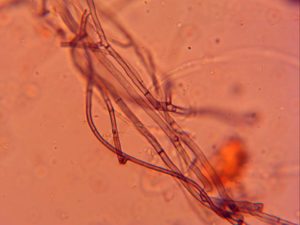
This is what fungus looks like under the microscope. The walls – or septa- that you see at regular intervals along the strand tell you that this is a beneficial fungus. You can also see the dark brown color and the width of the strand (wider than two bacteria side by side). They also let you know that they’re here to help.
Protozoa
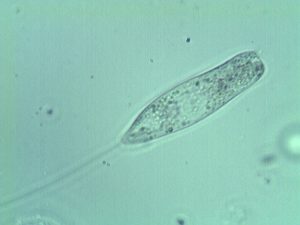
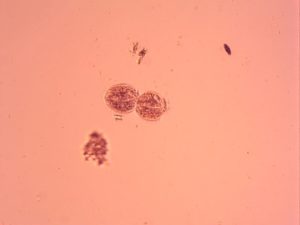
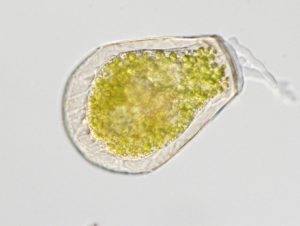
Top to bottom: Flagellate, Ciliates, Testate Amoeba
These are the first class of predators. They eat bacteria. Flagellates are really difficult to get good pictures of, because they’re so small, and they move quickly. They use their flagellum like a propeller to move through the water. Ciliates are fast. They have tiny hairs (called cilia) all over their body, and they wave those around to get where they want to go. An amoeba is an androgynous blob of an organism. It oozes where it wants to go, and engulfs its prey. In the picture, you see the amoeba nicely contained in a little shell, called a testate. That shell is the creature’s protection.
Nematodes
Nematodes are the next predators of the food chain. They eat bacteria, fungi, protozoa, and other nematodes. You can identify what these guys eat based on their mouth. A simple, wide mouth indicates a bacterial feeder. If you see a spear in the mouth, you’re looking at a fungal or root-feeding nematode. To differentiate between the two, I look for a knob or a muscle at the end of the spear. Predatory nematodes (they eat other nematodes) are much larger than any of the others. They have a large, wide mouth, with a giant tooth inside. Here’s a great video to show you what they look like.
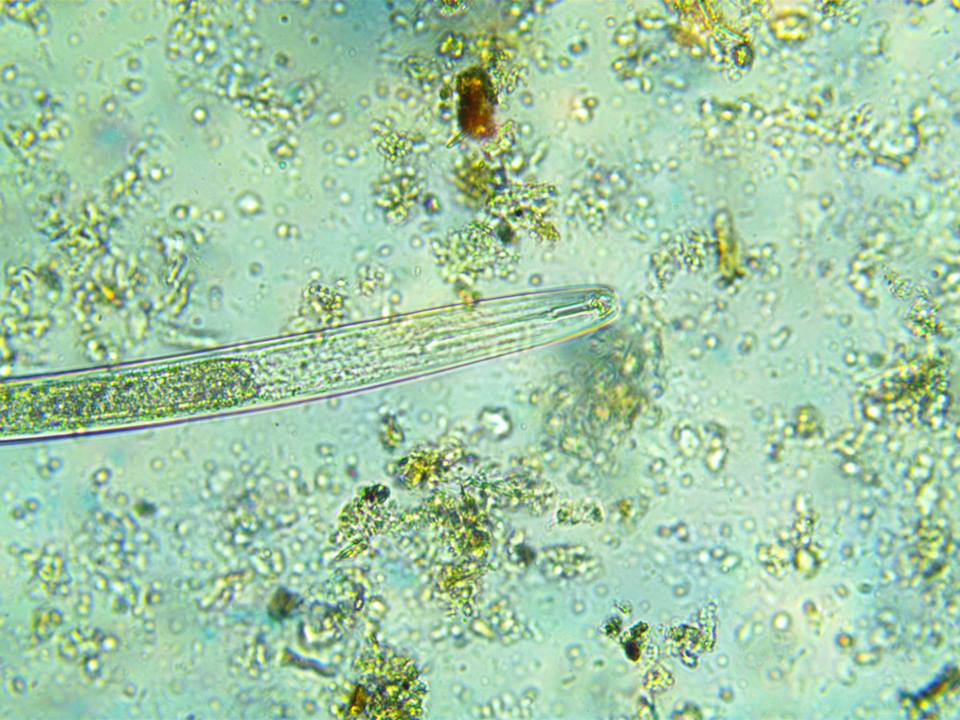
Leave a Reply